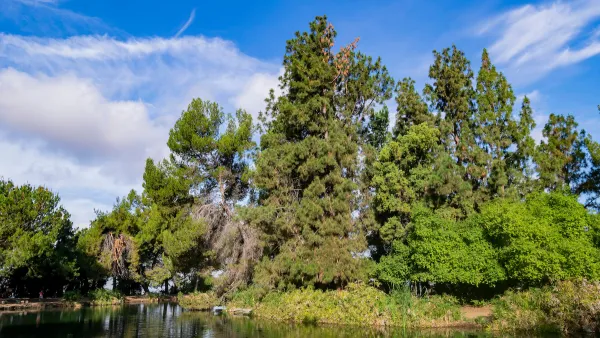President Biden's executive order may put the final nail in the coffin of the controversial pipeline project, but it was unwavering local activists who kept the pressure on for a decade.

The Keystone XL pipeline, which, along with the Dakota Access Pipeline, became a buzzword and a political lightning rod during the Trump administration, may finally be dead thanks to an executive order signed by President Biden rescinding a prior permit. But, according to Yessenia Funes writing for Atmos, it is the frontline Indigenous organizers, working tirelessly for the last ten years to stop the project, that deserve the real credit.
Since 2011, Joye Braun has been a key part of the fight against the pipeline. In the beginning, residents like her primarily worried about protecting important waterways and sacred lands. Since then, climate change and greenhouse gas emissions have become urgent global concerns. "Braun has seen former President Barack Obama (with Biden alongside him) kill the 1,179-mile pipeline only to see Trump resurrect it. That’s why she calls it a 'zombie pipeline.'"
Activists are cautiously optimistic that Biden's action will stop the pipeline for good. "Tribal nations in the U.S. are sovereign nations with treaty rights. All they ask is that the federal government and private companies treat them as such and leave their water and lands alone."
FULL STORY: RIP Keystone XL

National Parks Layoffs Will Cause Communities to Lose Billions
Thousands of essential park workers were laid off this week, just before the busy spring break season.

Retro-silient?: America’s First “Eco-burb,” The Woodlands Turns 50
A master-planned community north of Houston offers lessons on green infrastructure and resilient design, but falls short of its founder’s lofty affordability and walkability goals.

Delivering for America Plan Will Downgrade Mail Service in at Least 49.5 Percent of Zip Codes
Republican and Democrat lawmakers criticize the plan for its disproportionate negative impact on rural communities.

Test News Post 1
This is a summary

Test News Headline 46
Test for the image on the front page.

Balancing Bombs and Butterflies: How the National Guard Protects a Rare Species
The National Guard at Fort Indiantown Gap uses GIS technology and land management strategies to balance military training with conservation efforts, ensuring the survival of the rare eastern regal fritillary butterfly.
Urban Design for Planners 1: Software Tools
This six-course series explores essential urban design concepts using open source software and equips planners with the tools they need to participate fully in the urban design process.
Planning for Universal Design
Learn the tools for implementing Universal Design in planning regulations.
EMC Planning Group, Inc.
Planetizen
Planetizen
Mpact (formerly Rail~Volution)
Great Falls Development Authority, Inc.
HUDs Office of Policy Development and Research
NYU Wagner Graduate School of Public Service





























